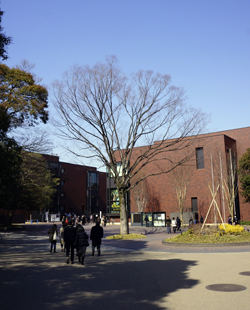
Tokyo Metropolitan Art Museum
The Tokyo Metropolitan Art Museum was established as the Tokyo Prefectural Museum on May 1, 1926, and has been popular as "the museum of Ueno," where visitors can see masterpieces at home and abroad, and where contemporary artists can exhibit their new works, for more than 80 years since its opening. With the old museum (the old building at the time of its establishment) becoming cramped, the new building was built upon the design of Architect Kunio Maekawa in 1975. However, the new building also became old after more than 40 years had passed since its construction, so its restoration began in 2010, and it was reopened on April 1, 2012. (8-36 Uenokoen, Taito City)
Artworks introduced in this website are changed as needed.
Here is the first public museum in Japan.
The Tokyo Metropolitan Art Museum, opened in 1926, is the first public museum in Japan. The museum has been the venue for the "Bunten" exhibition (present "Nitten"), "Inten" exhibition and Nika Art Exhibition. It is said that the phrase "Geijutsu no Aki," or autumn is the season for art, has been born here because these annual exhibitions are held in autumn. The museum has taken a role as so-called "museum for citizens" where masterpieces at home and abroad and contemporary art are extensively introduced. Since the first Tokyo Prefectural Museum that was built in Ueno Park became cramped, the new museum designed by Architect Kunio Maekawa was built in Ueno Park. There is also the National Museum of Western Art designed by Architect Le Corbusier in Ueno Park. Kunio Maekawa, along with Junzo Sakakura and Takamasa Yoshizaka, also participated in the Western museum's construction as Japanese collaborators. Common features that reflect the architectural concept of the Western museum can be found in the Tokyo Metropolitan Art Museum's gently declining ramp, elegantly curving spiral staircases, and spacious lobby and exhibition rooms. (continued in the lower column)
For the National Museum of Western Art, refer to "Contemplating in the National Museum of Western Art."
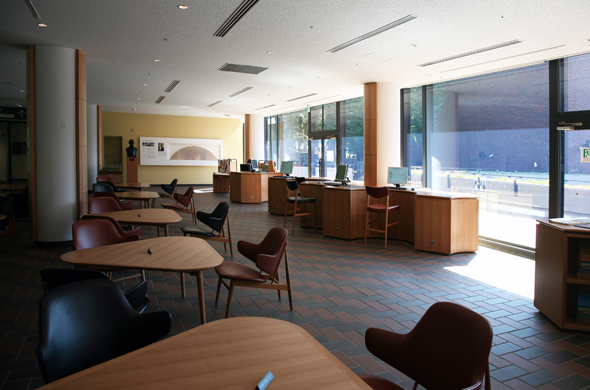
Keitaro Sato Memorial Art Lounge
The Tokyo Metropolitan Art Museum aims to become a gateway to art, and defines its role as "the museum where people meet and create new values," "the museum that vitalizes art activities and deepens appreciation of art," "the museum that attaches importance to tradition and infuses new breath into art," and "the museum where visitors can see masterpieces at home and abroad." The museum consists of the "Kikaku" wing where special exhibitions are held and the "Kobo" wing and galleries where themed exhibitions, exhibitions of the museum's collections, and artists groups' exhibitions are held. There are an entrance hall, a restaurant, a cafe, a lounge and a museum shop in the central wing. In the networking activity wing adjacent to the central wing, there are "Library and Archives," a studio, an art study room, an assembly hall and a chic restaurant.
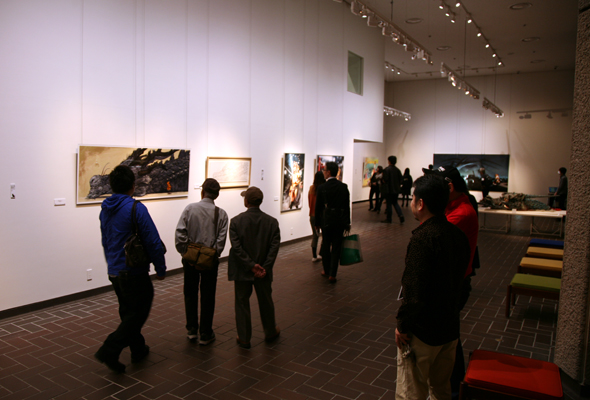
Gallery
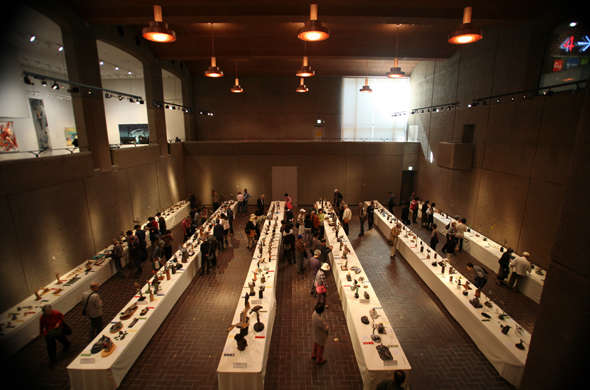
High-ceilinged spacious gallery
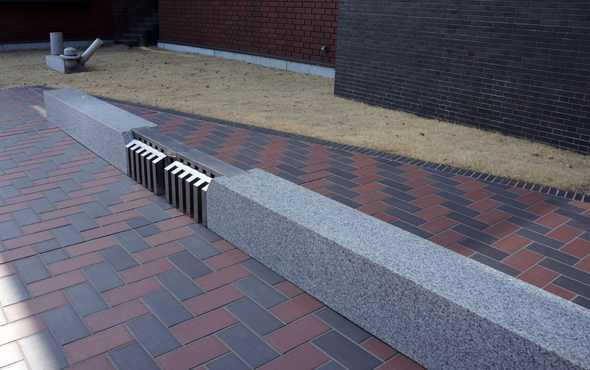
"Seki no Mieru Enkei," or distant view in which a weir can be seen, (1975) by Haruhiko Yasuda
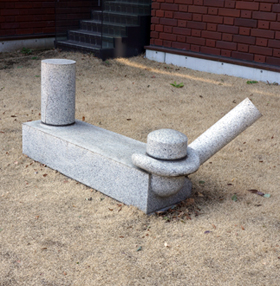
"P3824 M-kun Madeno Kyori," or P3824 distance to Mr. M, (1977) by Hisao Suzuki
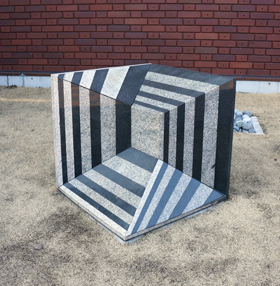
"Mobius no Rippotai," or Mobius's cube, (1978) by Haruo Igarashi
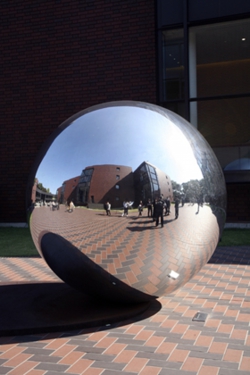
"my sky hole 85-2, light and shadow" (1985) by Bukichi Inoue
The large metal sphere created by Bukichi Inoue, which is exhibited at the "esplanade" stretching from the museum's main gate, is the symbol of the museum. Visitors almost always look down into the hole excavated in the shining sphere. Another Bukichi Inoue's work, "my sky hole 91 tokyo," which is a large arch-shaped red sculpture, is placed in the square in front of the Tokyo Metropolitan Government Office. The work is also the symbol of the Tokyo Metropolitan Government.
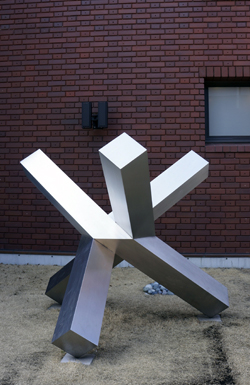
"Sanbon no Chokuhotai B," or three cuboids B, (1978) by Masakazu Horiuchi
Sculptures are exhibited on the grounds.
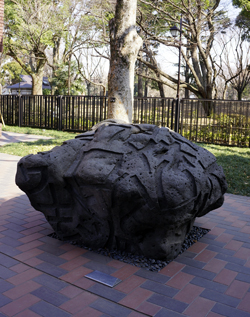
"I Ro Ha Ni Ho He To Chi Ri Nu Ru Wo Wa Ka Yo Ta Re So Tsu Ne.." (1979) by Hisayuki Mogami
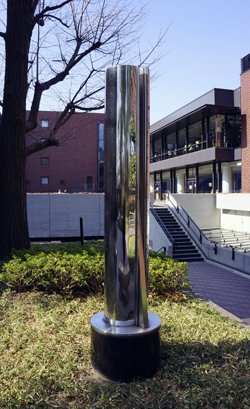
"Enchu no Ryoiki," or area of column, (1975) by Jo Oda

Tokyo Metropolitan Art Museum
The Tokyo Metropolitan Art Museum was established as the Tokyo Prefectural Museum on May 1, 1926, and has been popular as "the museum of Ueno," where visitors can see masterpieces at home and abroad, and where contemporary artists can exhibit their new works, for more than 80 years since its opening. With the old museum (the old building at the time of its establishment) becoming cramped, the new building was built upon the design of Architect Kunio Maekawa in 1975. However, the new building also became old after more than 40 years had passed since its construction, so its restoration began in 2010, and it was reopened on April 1, 2012. (8-36 Uenokoen, Taito City)
Artworks introduced in this website are changed as needed.

"my sky hole 85-2, light and shadow" (1985) by Bukichi Inoue

"Sanbon no Chokuhotai B," or three cuboids B, (1978) by Masakazu Horiuchi

"I Ro Ha Ni Ho He To Chi Ri Nu Ru Wo Wa Ka Yo Ta Re So Tsu Ne.." (1979) by Hisayuki Mogami
















